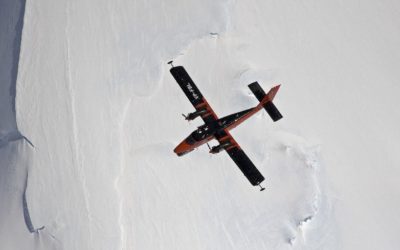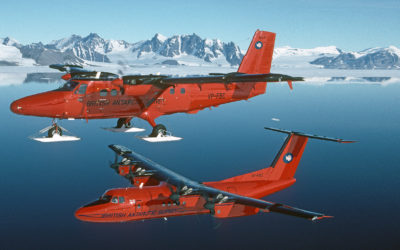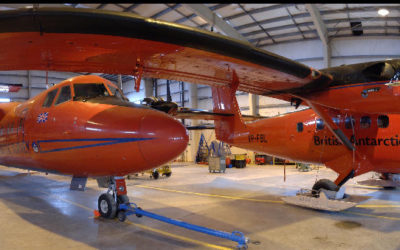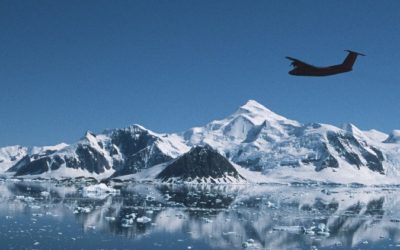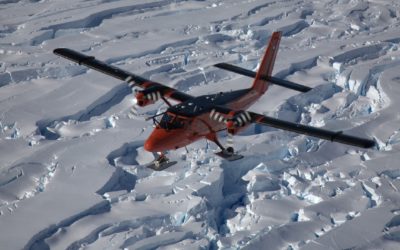
Aerial photography camera
Aerial photography at the British Antarctic Survey The British Antarctic Survey owns and operates a Zeiss RMK large format aerial photography camera. The camera can be fitted to two of …
Our airborne science and technology services and facilities contribute to a National Capability programme that is supported by the UK Government and NERC.
Scientific community access to Antarctic and Arctic infrastructure is coordinated and managed by BAS through the Collaborative Antarctic Science Scheme and opportunities for polar fieldwork for NERC-funded scientists. We encourage you to contact us as soon as possible to discuss your project requirements. Scientific instruments, sensors and equipment that will be deployed on Twin Otter aircraft require time for installation and certification. Depending on the instrumentation to be fitted it may be necessary that integration, installation and testing cost are paid.
BAS will deliver an airborne geophysical capability deployed on low-cost piloted and autonomous aircraft. This instrument suite includes gravimeter, magnetometers and ice-penetrating radar, which can be flown with LIDAR in support. The suite has been widely employed on NERC and other grants. Details here
BAS will deliver an instrumented aircraft with suite of atmospheric instruments and scientific expertise ready-to-support grants, collaborations, and strategic programmes.

Aerial photography at the British Antarctic Survey The British Antarctic Survey owns and operates a Zeiss RMK large format aerial photography camera. The camera can be fitted to two of …
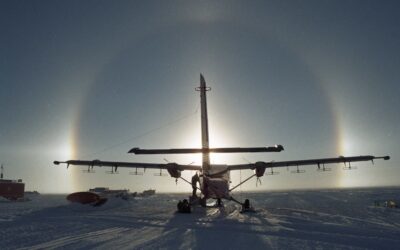
Enabling ice observation programmes
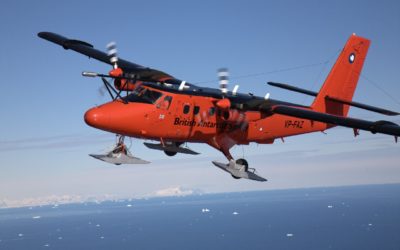
Airborne instrument capability
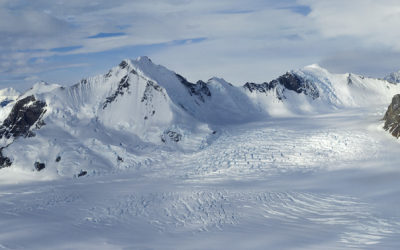
Two of the four BAS Twin Otters are equipped with a full remote sensing capability, providing scientists with data on land, ice and sea. This includes VNIR & SWIR hyperspectral …
29 January, 2019 by Michael Dinn
In January 2019 a science and engineering team drilled over two kilometres through the ice sheet in West Antarctica using hot water. It was the first time they had done this …
26 January, 2016 by Tom Jordan
Wrapping up I have started several of my blog posts saying I am writing in various odd/unusual/uncomfortable locations…the back of a Twin Otter, or in a mountain tent high on …
18 January, 2016 by Tom Jordan
Culture shock Just over two weeks ago I was writing this blog hunched up in a mountain tent, having not washed for a week, and with the company of just …
15 January, 2016 by Tom Jordan
One week on from departing Rothera into the field and the first leg of the PolarGAP survey at FD83 is almost over, I get to sit back, relax a bit …
6 January, 2016 by Tom Jordan
The altimeter in the front of the Twin Otter aircraft is showing 8500 ft as we cruise due south from Rothera research station for the next leg in our PolarGAP …
7 December, 2015 by Tom Jordan
Tom Jordan is part of the PolarGAP project, an ambitious international collaboration which will use airborne geophysics to explore one of the last known frontiers on our planet – the …
26 November, 2024
A project looking at how clouds affect climate change in Antarctica starts its second year of field research this month. The Southern Ocean Clouds (SOC) project, which is part of …
22 February, 2024
A team testing the Windracers ULTRA drone in Antarctica has shared the first video footage of the aircraft flying autonomously over British Antarctic Survey’s (BAS) Rothera Research Station and its …
3 February, 2024
A team have arrived at Rothera Research Station, ready to start testing the new Windracers ULTRA autonomous drone in Antarctica. If successful, the new drone platform could represent a major …
31 May, 2023
The ground beneath Antarctica’s most vulnerable glacier has been mapped for the first time, helping scientists to better understand how it is being affected by climate change. Analysis of the …
3 February, 2023
A team of scientists are currently conducting a major experiment over the Southern Ocean that will help to improve climate modelling. The Southern Ocean Clouds project team are performing several …
17 November, 2022
Next generation fixed-wing drones, capable of operating autonomously beyond the standard visual line of sight, are creating datasets of major wildlife populations around South Georgia for long-term monitoring to aid …
10 March, 2021
For the first time, an international team of scientists has used satellite magnetic data from ESA’s Swarm mission, together with aeromagnetic data, to help reveal the mysteries of the geology …
23 April, 2019
Scientists embark on a three-week flying campaign today (23 April) to study methane emissions from gas fields in the southern North Sea. Using specialised scientific equipment, on board one of …
5 November, 2018
Unveiling key geological features of the Earth’s lithosphere
24 May, 2018
Revealing Antarctica’s hidden world
11 August, 2017
The British Antarctic Survey Air Unit have been awarded the Johnston Memorial Trophy for 2017 by The Honourable Company of Air Pilots. This is a considerable acknowledgement of the regard held …
29 November, 2016
As spring returns to the southern hemisphere British Antarctic Survey (BAS) has started another research season which will take them over land, sea and ice in search of answers to …
15 September, 2016
ODA funds – expertise to address major challenges facing the developing world
This joint UK-US research programme aims to improve the understanding of the processes affecting ice sheet stability to predict, with more certainty, the future impact of sea-level rise from Thwaites …
The Arctic Summer-time Cyclone Project is a joint project of scientists from the University of Reading, University of East Anglia and the British Antarctic Survey with expertise in atmospheric dynamics, …
The polar ice sheets play a major role in controlling Earth’s sea level and climate, but our understanding of their history and motion is poor. The biggest uncertainty in predicting …
Understanding the contribution that polar ice sheets make to global sea-level rise is recognised internationally as urgent. The mission of this five-year project is to capture new observations and data …
GOCE+Antarctica- Dynamic Antarctic Lithosphere -is an international project supported by the European Space Agency (ESA) that is using GOCE satellite gravity gradient data, GPS data and innovative 3D modelling to …
Polar Expertise – Supporting Development
PRESCIENT (UK Polar Research Expertise for Science and Society) is a joint programme between BAS (British Antarctic Survey) and CPOM (the Centre for Polar Observation and Modelling). The programme supports …
29 May, 2019 by Hamish Pritchard
About 800 million people depend in part on meltwater from the thousands of glaciers in the high mountains of Asia. Water stress makes this region vulnerable to drought, but glaciers…Read more on Asia’s shrinking glaciers protect large populations from drought stress
